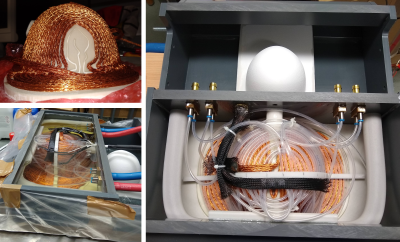Sebastian Littin1, Tristan A. Kuder2, Feng Jia1, Arthur Magill2, Philipp Amrein1, Frederik B. Laun3, Sebastian Bicklehaupt4, Mathias Davids5,6,7, Valerie Klein5,7, Mark E. Ladd2, and Maxim Zaitsev1,8
1Department of Radiology, Medical Physics, University Freiburg, Faculty of Medicin, Freiburg, Germany, 2Medical Physics in Radiology, German Cancer Research Center, Heidelberg, Germany, 3Department of Radiology, MR Physics, University Medical Center Erlangen, Erlangen, Germany, 4Department of Radiology, University Medical Center Erlangen, Erlangen, Germany, 5Department of Radiology, A. A. Martinos Center for Biomedical Imaging, Charlestown, MA, United States, 6Harvard Medical School, Boston, MA, United States, 7Computer Assisted Clinical Medicine, Heidelberg University, Medical Faculty Mannheim, Heidelberg, Germany, 8High Field MR Center Center for Medical Physics and Biomedical Engineering, Medical University of Vienna, Vienna, Austria
1Department of Radiology, Medical Physics, University Freiburg, Faculty of Medicin, Freiburg, Germany, 2Medical Physics in Radiology, German Cancer Research Center, Heidelberg, Germany, 3Department of Radiology, MR Physics, University Medical Center Erlangen, Erlangen, Germany, 4Department of Radiology, University Medical Center Erlangen, Erlangen, Germany, 5Department of Radiology, A. A. Martinos Center for Biomedical Imaging, Charlestown, MA, United States, 6Harvard Medical School, Boston, MA, United States, 7Computer Assisted Clinical Medicine, Heidelberg University, Medical Faculty Mannheim, Heidelberg, Germany, 8High Field MR Center Center for Medical Physics and Biomedical Engineering, Medical University of Vienna, Vienna, Austria
The aim of this project is to design and implement a non-linear single channel breast gradient coil for diffusion encoding. In vivo diffusion weighting with gradient strengths above 1 T/m is feasible in the female human breast.

Fig 4: Diffusion-Weighted images (top row) measured in a dedicated phantom within the same slice for different amplitudes demonstrate the diffusion encoding capability. Measurements were performed with spin-echo diffusion deploying 10ms duration for each gradient pulse. ADC maps (bottom row) calculated using measured field maps to correct for inhomogeneities. Depicted are ADC maps acquired with same currents which results in different diffusion weighting closer to the bottom of the cup. Positions are given in the frame of reference of the scanner.

Fig 5: Breast
gradient coil during construction. Coil windings from square profile litz wire
were manually wound onto a 3D-printed former (upper left). All components were
combined into a housing (right) including water cooling, temperature sensors,
and a second, non-functional cup. The coil was cast in epoxy (lower left) under
vacuum.
